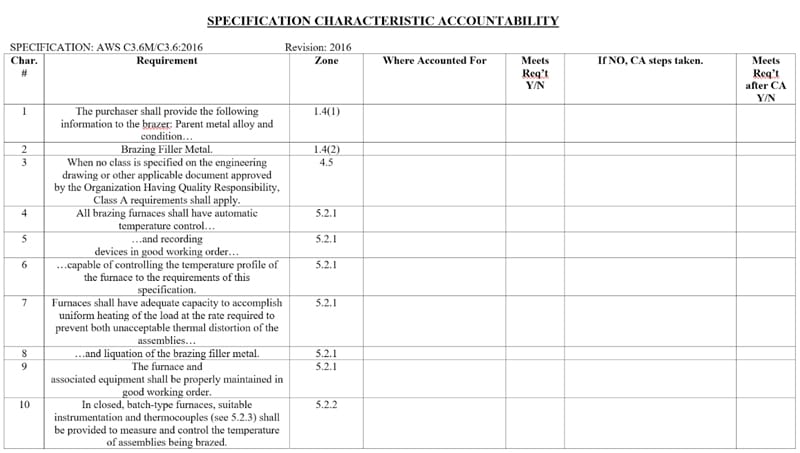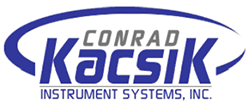 Compliance verification is a foundation for a number of industry specifications, such as Nadcap and AMS2750E. Many people focus on following the right procedures and overlook the need to clearly account for all requirements in their internal procedures. When meeting industry standards, it’s imperative to not only capture all of the requirements but state them clearly and unambiguously within your procedures.
Compliance verification is a foundation for a number of industry specifications, such as Nadcap and AMS2750E. Many people focus on following the right procedures and overlook the need to clearly account for all requirements in their internal procedures. When meeting industry standards, it’s imperative to not only capture all of the requirements but state them clearly and unambiguously within your procedures.
Carefully developing characteristic accountability forms for each specification provides a valuable tool to ensure conformance. Here’s how to do it.
Knowing the Specifications
Before building your internal procedures, be sure you fully understand the industry and prime specifications themselves. If you’re rusty, new to a specification or want any help, know that industry specifications are available online, and many training programs offer deep insights. Training resources are abundant and should be researched depending on your needs. Please visit www.kacsik.com/services/training for available training courses. Take advantage of all the resources you can to get the best outcomes.
Understanding the Requirements
Once you are fully aware of the specifications, you can capture the requirements. When done correctly, it will allow you to capture the requirements and have a rough approximation of an audit document that makes a great reference down the road. Remember that several requirements can appear within a single paragraph, or even within a single sentence. As an example, AWS C3.6M/C3.6:2016, para 5.2.1 states:
“All brazing furnaces shall have automatic temperature control and recording devices in good working order capable of controlling the temperature profile of the furnace to the requirements of this specification. Furnaces shall have adequate capacity to accomplish uniform heating of the load at the rate required to prevent both unacceptable thermal distortion of the assemblies and liquation of the brazing filler metal. The furnace and associated equipment shall be properly maintained in good working order.”
They’ve packed eight requirements into three sentences here:
-
All brazing furnaces shall have automatic temperature control…
-
…and recording devices in good working order…
-
…capable of controlling the temperature profile of the furnace to the requirements of this specification.
-
Furnaces shall have adequate capacity to accomplish uniform heating of the load at the rate required to prevent both unacceptable thermal distortion of the assemblies…
-
…and liquation of the brazing filler metal.
-
The furnace and associated equipment shall be properly maintained in good working order.
It’s helpful to separate each requirement on your form so that you can account for it by stating the procedure and paragraph in which it appears. This process also provides a better understanding of the requirements within the specification.

Accounting for Everything
After you’ve separated and documented all of the requirements on a characteristic accountability form, carefully examine each requirement to find items that may not be formal requirements but still need to be acknowledged in some way. As an example, AMS2750E paragraph 3.1.1.1 states “Unless specifically noted, requirements apply to all temperature sensor materials.” This is not a straightforward requirement, but it should be on your characteristic accountability form. Here’s how this may look:

Arrange your characteristic accountability form so that you can easily identify responses to each requirement and that you’re able to show what was done to account for non-conforming items. Below is an example of this:

This format would allow the characteristic accountability to be used as an auditing tool as well. It can also be used to account for specification revisions when they occur.
A well-researched and carefully built characteristic accountability form will pay off by deepening your understanding of specifications and requirements, improving your processes and helping you achieve and maintain compliance.
To learn more about compliance verification with industry standards, contact Conrad Kacsik.
To read more of Jason's articles related to Nadcap heat treat audits and pyrometry, you can visit his articles at HeatTreatToday.com as well as Thermal Processing Magazine.









